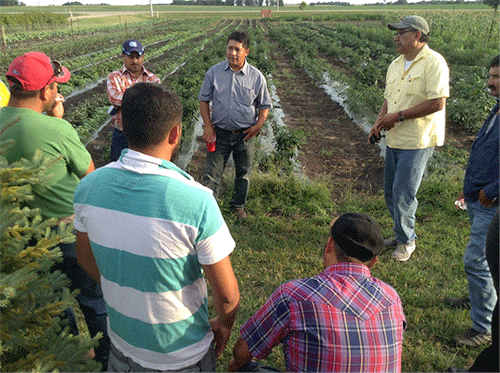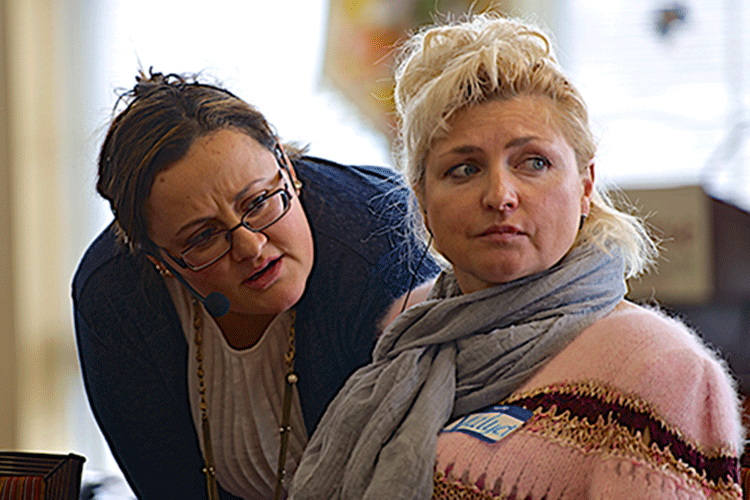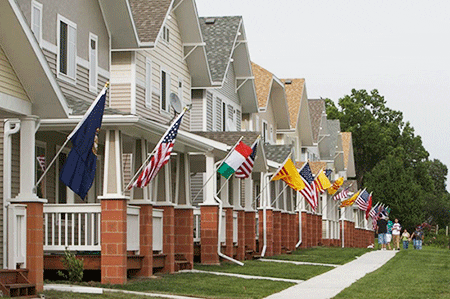Access to government-issued identification is a crucial issue for homeless people. Every day, undomiciled New Yorkers are arrested when they could have just gotten a summons. A police officer has the discretion to choose whether or not to accept some forms of ID, such as state-issued electronic benefits transfer (EBT) cards, which are often the only kind of ID a homeless person may have.
If you’re a homeless person whose only identification is the EBT card, and you’re stopped by the police, a number of different things could happen—and all of them have happened to me. You could spend hours in the precinct while they run your fingerprints. The officer could ask, “Who can I call?” and make a phone call to someone who can verify your identity. The officer could accept the EBT card, give you a ticket, and send you on your way. Or you could get put through the system and sent to Central Booking and spend the night—or longer—in jail. Often it depends on how hard an officer wants to work, whether they’ve met their [ticket] quota already, and whether they’re looking to get a couple hours of overtime.
That’s why Picture the Homeless has been interested in following the lead of cities like New Haven, Conn., which created municipal ID cards in 2007 for people who had difficulties securing conventional IDs.
I see the municipal ID as necessary because I’ve lost my ID several times due to being homeless. The first time was 10 years ago, when I was in the shelter. The shelter gave us lockers and told us our personal belongings would be safe. That was not the case. There are people in shelters, including staff, for whom selling stolen identification is a business.
Later, when I had an apartment and then got evicted, I lost my ID again, along with a lot of other possessions, and had to bend over backward to get a replacement birth certificate in order to get a replacement social security card, in order to get a replacement benefits card. This process can take up to six months. One time when I was stopped and detained at the precinct, my identification documents were confiscated, “so we can verify who you are,” and some of that identification was not returned. Unfortunately, this happens all the time. Another time I had a bag stolen while I was on the street that contained some of my identification. All of these are situations that low-income people are especially vulnerable to, because of housing marginalization and lack of control over space.
So I understand all the negative consequences of not having sufficient ID: the risk of unnecessary arrest, the places you can’t get into (in security-conscious post-9/11 New York, many buildings require ID to enter, especially large corporate office buildings where you might need to go for a job interview), the cost of replacement ($18 for a driver’s license or $30 for a birth certificate can be a lot of money when you’re homeless—the equivalent of 600 bottles and cans, for example).
I have worked for the past dozen years with not only other people who are homeless, but also people who have aged out of institutions, people who have returned from prison, and people who are transgender, all of whom have their own challenges with getting sufficient and appropriate ID. They have shared with me many horror stories of what happens when you don’t have identification. They’ve been unable to open a bank account, and forced to carry all their money around with them; if they’re out on the street this makes them extremely vulnerable to being robbed. They’ve been unable to visit family members in the hospital. Transgender folks who don’t have ID to “prove” their transition have been forced to use public restrooms that correspond with the gender they were assigned at birth, subjecting them to the risk of abuse, or worse.
Stories like these are what brought Picture the Homeless into the meetings about the need for municipal ID. Because lots of other communities within New York had been supporting the issue as well, the movement started out as conversations among diverse communities.
People working around immigrant’s rights, for example, spent years fighting to make it easier for undocumented immigrants to access driver’s licenses or state-issued non-driver’s identification—but given the incredible challenges of getting things done in Albany, that didn’t go anywhere, so they turned to municipal ID.
As with a lot of issues, the fight had become very parochial. Different communities were fighting separately for what their people needed. Organizations concerned about identification for people leaving prison didn’t necessarily identify their issues as the same ones affecting homeless people. Some homeless people didn’t want to stand alongside undocumented immigrants—and vice versa!
That was something we had to overcome—the judgments and stigma that kept us from seeing each other as equal partners, that kept us from coming together to take up a common cause and fight for something that would benefit everyone. In the early drafts of the proposed legislation, after the mayor and the speaker had announced the broad outlines of the program in February 2014, the needs of homeless people weren’t being prioritized. A ton of leadership had come from immigrant groups who’d been working on this issue for so long, and so their particular needs were prioritized.
We spent almost a year coming to the table together to present our needs, to answer all these questions about how much it cost, what documentation would be accepted, what the card would look like—all of this before we even started meeting with the city, so we would be a unified voice and have each other’s backs as we anticipated pushback from different agencies.
Once the City Council passed the bill, in June 2014, and the administration began working out the logistics, we needed to address a lot of new challenges. Different communities have different needs, and the municipal ID card will serve different functions, so the coalition work between diverse folks was even more important once the bill passed. Lots of transgender people don’t have the same need as homeless people for an ID that is flexible about using alternate addresses or “in care of” addresses, but they did need flexibility around gender. For others, what is important is the immigration status, and what kind of paperwork and documentation you need to provide to verify your identity. For domestic violence survivors, it was actually important that there not be an address on the card, to ensure they cannot be tracked down by their abusers. Picture the Homeless ensured that the unique situation of homeless people—specifically lack of a fixed address—was incorporated into the program.
The program was finally rolled out in January 2015—but that doesn’t mean our work is over. The demand for this program has been so high that people might have to wait months to get an appointment to apply for a card. We’re hearing that homeless people have been getting inaccurate information when they call 311 to make an appointment about what paperwork they need to bring.
We’re hearing that Dept. of Homeless Services shelters aren’t always helpful in terms of giving shelter residents what they need in order to use the shelter as their address. And the critical piece for our people remains: How will the NYPD be using the ID? The mayor and the police commissioner promised that individual officers would accept the card as valid for establishing identity, so that they can issue a summons instead of arresting people. But what does their patrol guide say about it? What kind of training have officers been getting? We’re engaged in constant outreach to homeless folks to monitor how the NYPD is responding to people who present it as identification.
Every victory means more work. Getting this landmark bill passed is just the start of the struggle, but the relationships we’ve built and the deep alliance-building we engaged in have made the movement stronger and more effective at challenging all the other issues of systemic injustice and oppression that affect so many different communities in different ways.
______________________________________
RESOURCES
IDNYC official page
Homeless People Need a Municipal ID, Picture the Homeless
Municipal IDs Are Coming to New York, Make the Road




Comments